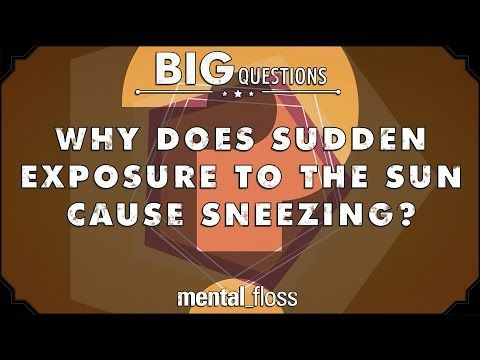Why We Sneeze From Sudden Sun Exposure

In some ways, sneezes are as much of a mystery as yawning. We know that sneezing is a reflex for our noses to eliminate any irritants, like germs, dust, or pollutants, but we’re not really sure why some people sneeze when they're suddenly exposed to bright sunlight. Similar to the enigma of contagious yawning (is it a change in air pressure, or a chance for cooling the brain?), sneezing under sunlight seems to be one of those questions that doesn’t really have an answer.
One new video, however, tries to explain the different theories behind photic sneeze reflex, the general term for this phenomenon. It’s also called Autosomal dominant compelling helio-ophthalmic outburst syndrome (ACHOO), or sometimes simply sun sneezing.
An early theory was that the nervous system was responsible for the photic sneeze reflex by mixing up nerve signals, the video states. But modern day scientists generally resort to two main ideas: that the photic sneeze reflex is caused by a combination of the pupillary light reflex and the sneeze reflex, and that it may be largely caused by genetics. The pupillary light reflex is what causes our pupils get smaller in bright light, when the nervous system sends a reflex to the optic nerve. A sneeze reflex, meanwhile, occurs when the trigeminal nerve in the brain feels some sort of itch or irritant in the nose then tries to flush it out with a sneeze.
“Normally, these two reflexes are unrelated, but experts believe their paths might cross in the people who have the photic sneeze reflex,” Craig Benzine, the video’s host, states. “And that’s possible because the trigeminal nerve and the optic nerve are close together.”
Abnormal sneezing — like the girl who sneezes up to 12,000 times a day for no apparent reason, sexually-induced sneezing, or sneezing after eating — is still not fully understood by scientists. As such, the sneeze remains slightly shrouded in mystery.
Published by Medicaldaily.com



























